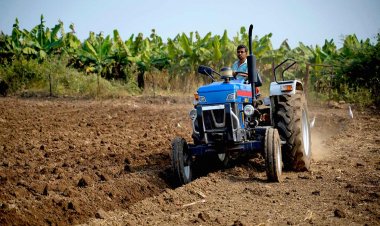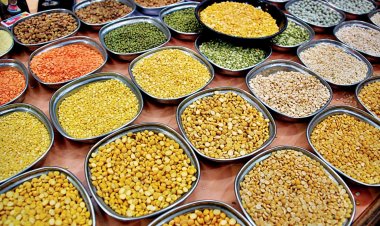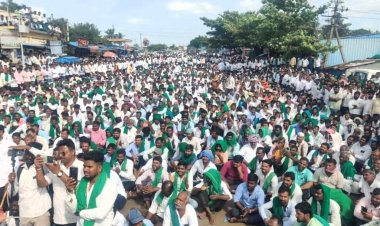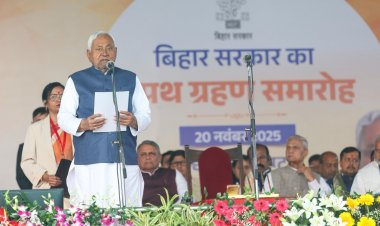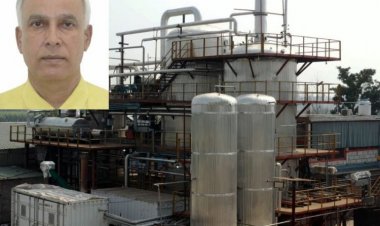Rural governance: Top to bottom and bottom to top
The mess exists not only at the grassroots level but also at the top level which, too, has to be cleaned. Hence, for effective governance, the mess has to be cleaned at the top and bottom levels, otherwise all activities at the local level would be as ‘business as usual’.
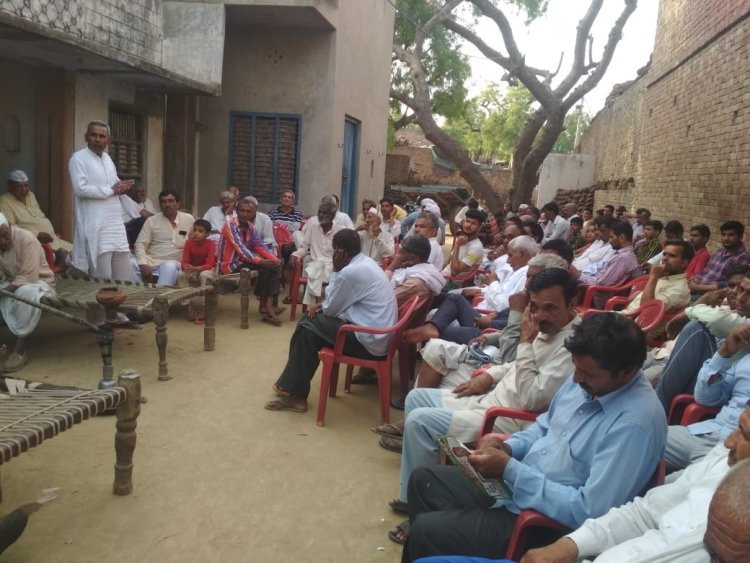
In common parlance, governance means the implementation of rules and regulations for performing various activities. It is also said that governance is the process through which various stakeholders articulate their interests, exercise their rights and solve their differences.
But in view of the current situation which I am going to stress in this piece, what the Asian Development Bank (ADB) said about governance appears relevant: “Governance means the way those with power use that power.” If it is stretched a bit, it means that the government which is in power defines governance in its own terms. It implies that governance is related to the thinking of the people who are at the helm of affairs at various levels. They assume that what they think is the correct way of solving the problems at those levels. But they do not know what the problem is and how it could be addressed in the real sense.
I am giving two examples in this regard. One is related to top to bottom and another to bottom to top.
Top to bottom
In the first case, take the example of the Har Ghar Jal Scheme or Jal Jeevan Mission being implemented by the Department of Drinking Water and Sanitation (DDWS), Ministry of Jal Shakti, to enable every household in a village to have a Functional Household Tap Connection (FHTC) in the next five years. It was started in 2019.
It is a welcome step taken by the government to provide one of the basic necessities to rural people, that too in their courtyard. But the issue is the engagement of various stakeholders in the implementation of the Mission or governance.
The operational guidelines of the programme contain institutional mechanisms in its implementation. They speak of merely engaging the Gram Panchayats. There are no roles for the intermediate (Panchayat Samiti/Block Samiti/Janpad Panchayat/Kshetra Panchayat) and apex level (Zila Panchayat) in its implementation. Surprisingly, Implementing Support Agencies (ISAs) like NGOs are there, but there is no involvement of the Panchayats at block and district levels.
At the district level, a separate District Water and Sanitation Mission has been constituted, but no trust has been shown in the Zila Panchayat Institution, a constitutional body. Under such an arrangement, it seems incompatibility has been in-built into the implementation of the programme.
In the above context, it may be pointed out that the 15th Finance Commission (FFC) has recommended an allocation of Rs 2,36,805 crore to the Panchayati Raj Institutions (PRIs) for the period 2021-22 to 2025-26, out of which, 60 per cent is a grant for drinking water, rainwater harvesting, water recycling, sanitation and maintenance of the open defecation free (ODF) status.
In this regard, the funds would be distributed to PRIs under the following ranges:
Range of Distribution
|
|
Gram Panchayat |
Block Panchayat |
District Panchayat |
|
Minimum |
70% |
10% |
5% |
|
Maximum |
85% |
25% |
15% |
This indicates that the grant will also be given at the block- and district-level Panchayats. The Guidelines for the utilization of funds recommended by the FFC also say that the Annual Action Plans of a Village/Block/District for sanitation and drinking water supply are reflected in the Gram Panchayat Development Plan/Block Development Plan/District Development Plan in eGramSwaraj.
The Guidelines also say that the DDWS “would also handhold and provide technical guidance to the RLBs (rural local bodies) in implementing the tied grant component or the schemes/technology to be adopted for efficient use of the funds.” It is interesting to note that the guidelines of the FFC for the use of its grant have been issued by the DDWS.
In such a mess, how governance will take place at the grassroots level is a moot question. When the Guidelines themselves are incompatible, how would these work at the local level? How would the intermediate and apex tiers of the Panchayati Raj System use the grant devolved to them by the FFC for water and sanitation?
This is an example of the top-down approach to local governance. Similar is the issue of the quorum of the Gram Sabha prescribed by the Guidelines issued by the Ministry of Finance and provisions contained in the Panchayati Raj Acts of different States. There may be many such instances in the guidelines of different Centrally Sponsored Schemes.
Bottom to top
Let me give an example of a bottom-to-top approach with regard to governance. The Village Action Plan (VAP) of the Har Ghar Jal Scheme is supposed to be integrated into Gram Panchayat Development Plan (GPDP). But where is it happening like this?
It is not happening. This is what one gathers from the training sessions held in a district in Madhya Pradesh and Jaipur in Rajasthan that VAP is not integrated into GPDP while PRIs are the most important stakeholders in the preparation of plans for economic development and social justice at their levels.
What would Chairpersons and Members of intermediate and apex tiers be doing in providing basic necessities? Nothing. If such sorts of guidelines for different programmes are being implemented, what they are going to do at their levels is not far to know.
Another example of the bottom-up plan may be given in the Kisan Melas (farmer fairs) for Rabi crops organized in Uttar Pradesh in November 2022. The title of such a mela was “Investment in Agriculture (Rabi-22)”. The author attended and spoke at one such mela in one of the blocks of a district in UP.
In this block, the mela was held on 21 November 2022 at the block headquarters. It was surprising to note that orders for 17 line departments were issued from the level of District Magistrate of the district asking the heads of these departments to participate in these melas. But except Deputy Directors, Agriculture & Plant Protection and one scientist from a Krishi Vikas Kendra (KVK), none of the line department representatives was present there. So much so even the Block Development Officer (BDO) of the block concerned was not present in the mela.
Here, I would like to say that the Representative of the Deen Dayal Antyodaya Yojana - National Livelihoods Mission (DAY-NRLM) might have also been invited because a lot of agricultural activities, including natural farming/organic farming, are being taken up under this programme. There is a sub-scheme of the DAY-NRLM named Mahila Kisan Sashaktikaran Pariyojana.
Its provisions might have been told to those attending the mela. If this is the state of affairs of participation of district-level officials in important meetings, one can understand the plight of governance at the local level.
Insult was added to injury when it came to be known that by November 21, 2022, that as many as 65-70 per cent farmers had already sown wheat. Panchayat representatives might also be invited to such gatherings. What transpired, therefore, was a mere formality, which is the antithesis of effective governance at the local level. I would like to stress here that the Panchayati Raj System of local governance has to be strengthened across the country.
Mess at all levels
It appears appropriate to quote former Prime Minister Rajiv Gandhi in this regard. In 1988, Rajiv Gandhi organized various meetings with bureaucracy and elected representatives. These were the preludes to bringing out the Panchayati Raj Act to strengthen the Panchayati Raj system.
What he said in Hyderabad about three-and-a-half decades ago on 13 February 1988 is worth reporting here in the context of rural governance. “When you are a DM or Under Secretary, I am sure there is a feeling that as soon as you get to the rank above, you can solve all the problems.
“The Under Secretary feels that when he becomes a Deputy Secretary, he can really get to grips with the problem and there will be a solution. The Deputy Secretary feels that when he becomes a Joint Secretary, he can overcome all the problems and the Joint Secretary when he becomes a Secretary.
“A Secretary feels that perhaps the solution to the problems lies at the political level and if he joins politics, he can solve everything. Then, when we get to the political level, we think, ‘My God! What a mess there is at the bottom!’”
I just want to add here that the mess exists not only at the grassroots level but also at the top level which, too, has to be cleaned.
Hence, for effective governance, the mess has to be cleaned at the top and bottom levels, otherwise all activities at the local level would be as ‘business as usual’.
In the absence of proper concurrent monitoring of the Panchayats’ activities and the activities of different agencies by the Panchayats and their different subject committees and senior officials, substantial funds of various schemes have been siphoned off by elected representatives and officials in participatory mode.
Villagers know all this but cannot do anything due to their lack of ignorance of the provisions of the schemes and their indifference to local politics.
(The author is a former officer of the Indian Economic Service and currently President of the Karpa Foundation. He can be accessed at mpal1661@gmail.com.)



 Join the RuralVoice whatsapp group
Join the RuralVoice whatsapp group



















